- News
- Reviews
- Bikes
- Accessories
- Accessories - misc
- Computer mounts
- Bags
- Bar ends
- Bike bags & cases
- Bottle cages
- Bottles
- Cameras
- Car racks
- Child seats
- Computers
- Glasses
- GPS units
- Helmets
- Lights - front
- Lights - rear
- Lights - sets
- Locks
- Mirrors
- Mudguards
- Racks
- Pumps & CO2 inflators
- Puncture kits
- Reflectives
- Smart watches
- Stands and racks
- Trailers
- Clothing
- Components
- Bar tape & grips
- Bottom brackets
- Brake & gear cables
- Brake & STI levers
- Brake pads & spares
- Brakes
- Cassettes & freewheels
- Chains
- Chainsets & chainrings
- Derailleurs - front
- Derailleurs - rear
- Forks
- Gear levers & shifters
- Groupsets
- Handlebars & extensions
- Headsets
- Hubs
- Inner tubes
- Pedals
- Quick releases & skewers
- Saddles
- Seatposts
- Stems
- Wheels
- Tyres
- Health, fitness and nutrition
- Tools and workshop
- Miscellaneous
- Buyers Guides
- Features
- Forum
- Recommends
- Podcast
review
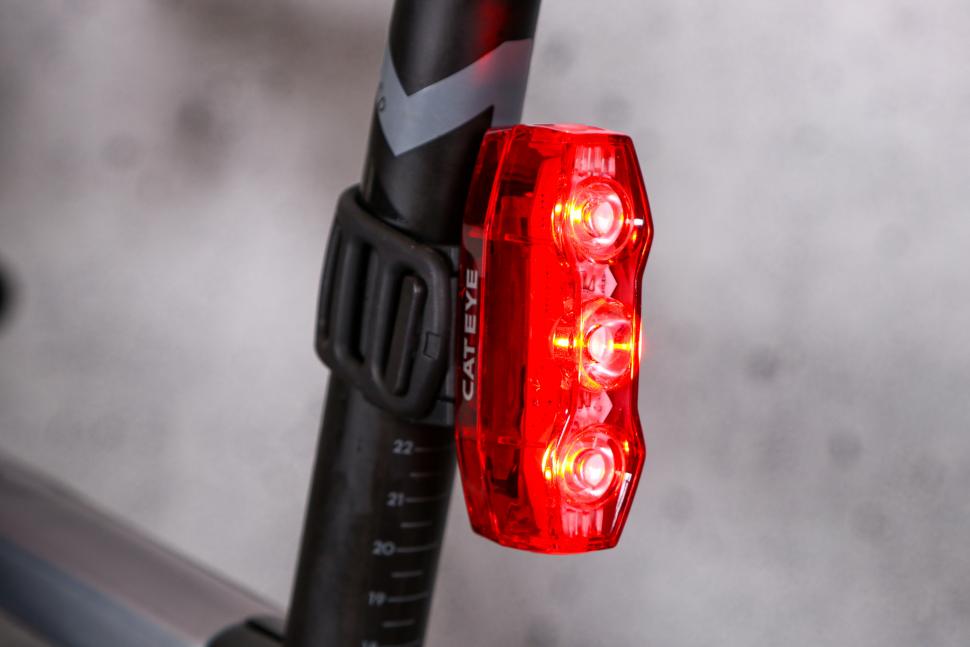 2021 Cateye Viz 300 Rear Bike Light 2.jpg
2021 Cateye Viz 300 Rear Bike Light 2.jpg£39.99
VERDICT:
Lots of power for the money, viewing angles are excellent and run times are strong
Great viewing angles
Good burn-times
Bright
Build feels solid
Slightly fiddly mount
Flash patterns are pretty hectic
Weight:
70g
Contact:
At road.cc every product is thoroughly tested for as long as it takes to get a proper insight into how well it works. Our reviewers are experienced cyclists that we trust to be objective. While we strive to ensure that opinions expressed are backed up by facts, reviews are by their nature an informed opinion, not a definitive verdict. We don't intentionally try to break anything (except locks) but we do try to look for weak points in any design. The overall score is not just an average of the other scores: it reflects both a product's function and value – with value determined by how a product compares with items of similar spec, quality, and price.
What the road.cc scores meanGood scores are more common than bad, because fortunately good products are more common than bad.
- Exceptional
- Excellent
- Very Good
- Good
- Quite good
- Average
- Not so good
- Poor
- Bad
- Appalling
The Cateye ViZ 300 can get extremely bright, is visible from as many angles as you could ask for and lasts really well on each charge. The price is good for its output, too – it basically does everything you could sensibly want.
Nothing is perfect, of course, and the ViZ has niggles. Two of its four modes are on the frantic side, the full-power 300lm flash is arguably obnoxious on all but the brightest days, and the clamp is a bit clumsy.
While the modes can be changed (and the unit remembers which one you were in), the strap design can't. To be clear, it's excellent once installed – stable, secure and a good angle – so if you're going to leave it there, it's all good.
You'll need your own decent-length micro USB cable if you plan to do so, though, as the supplied one is the usual stubby little thing that won't be reaching your seatpost.
Take the ViZ off to charge it (or stash away in a bag), though, and both the ladder strap and the chunky rubber bung fall off very easily. Being so soft they tend to do it silently too. That's tricky; lose one and you can't mount this anymore.
At least the black bracket clips to the light securely, and the mounting is square, so the light fits portrait or landscape. Rather cleverly, the squeeze when it's all fitted locks a little tab so the lamp can't jump out while you ride.
Unfortunately, that also means you can't leave the whole mount in place and just remove the lamp for charging, so you're back to trying not to lose bits.
On the upside, the mount spreads to fit all kinds of posts (including kamm tail), and angles the lamp pretty much vertically.
Water resistance is rated to IPX4, and while that's not the highest out there, the ViZ was untroubled by rain or spray during the test. Both the button and the charging port are protected by silicone, and while having the port underneath the unit puts it in line for spray, gravity ensures it won't pool and seep in.
Modes and run-times
The shortest claimed run-time is a useful 5hrs, and that's pretty accurate – surprisingly it's not for the eyeball-grilling 300lm 'Daytime Hyperflash,' which can signal nearby planets (probably) for up to 10hrs, but for the 30lm Constant mode.
That doesn't sound very bright, but the 30lm glow from all three LEDs through the transparent case is actually pretty eye-catching outside of bright sunshine or night-time commutes.
I shunned the 30lm Flashing mode (though it lasts a claimed 45hrs) as the flashes are such short bursts, and the pace just high enough to make it look (at least to me) like it'll almost instantly annoy following drivers.
I also avoided the Daytime Hyperflash in anything but strong sunlight, because it's so bright and so luridly chaotic it's like riding around on a distress beacon. Again it's a personal choice, but I don't want to give the worst drivers another excuse to throw a cretinous shut-your-eyes pass.
> Buyer’s Guide: 22 of the best rear lights for cycling
I found the final mode – Group Ride – the most useful. At 100lm it's bright but not tactical nuke bright, and it's actually easier on the eye than the dimmer flash as it always seems to leave something lit.
It's hard to tell exactly, as looking at this straight on can literally make your eyes hurt, but Group Ride appears to switch each LED between two brightnesses, and leave either two dim or one bright one on at all times. Thus it's never fully dark, and consequently easier on the eyes (I was looking from the side, in case you were wondering...).
With an 8hr claimed run-time from the 800mAh li-ion battery, Group Ride is very usable too. I certainly never had it shut down even after multiple rides, as there's ample opportunity to top up before it gets critical (and a red warning light at 1hr left, when it also switches to a special power-saving flash pattern).
Value
At £39.99, the ViZ 300 is cheaper than many lights of the same power. The Lezyne Laser Drive gives 250lm and is £65, for instance, though that also draws your own bike lane on the ground for you.
The Moon Sirius Pro is even brighter at 350lm and built really solidly, though it's complicated, and £54.99.
If you don't typically run lights on bright days and find 100lm enough, you can save a bit with something like the Gemini Juno 100 at £29.99, though that lacks the kind of side visibility this gives.
In fact, the ViZ 300's spread means you can check it's on with just a glance down while riding, which is something I appreciate. It's a feature it shares with my 270lm Knog Cobber (still in constant use two years on), and though the Knog's broad pinboard of tiny lamps is considerably easier on the eyes, it needs charging every ride and is now £78.99.
Overall
On the bike the CatEye ViZ is simple, secure, effective and long-lived. The clamp needs a bit more attention once you remove it – and if you don't use lights on bright days it's a bit excessive – but other than that it's very good; it gets the job done well.
Verdict
Lots of power for the money, viewing angles are excellent and run times are strong
road.cc test report
Make and model: Cateye Viz 300 Rear Bike Light
Size tested: 300 Lumen
Tell us what the light is for, and who it's aimed at. What do the manufacturers say about it? How does that compare to your own feelings about it?
Cateye says: "Pumping out an attention-grabbing 300 lumens with OptiCube lens technology, the versatile ViZ300 stands out with the power of Daytime Hyperflash mode and the friendliness of Group Ride mode."
Tell us some more about the technical aspects of the light?
Cateye lists:
3 LEDs (300 lm)
Highly visible during daytime
300 degree visibility
Long rear beam projection
OptiCube lens technology
Lithium-ion rechargeable battery
USB rechargeable (Micro-USB cable included)
Low battery indicator
4 modes Charging time: 3h
Mode memory function
Battery Auto Save (The mode automatically changes to flashing when the battery power gets low.)
New seat post bracket SP-15 which fits contemporary (kammtail) aero seatpost
Snap System
Rate the light for quality of construction:
8/10
Rate the light for design and ease of use. How simple was the light to use?
8/10
Rate the light for the design and usability of the clamping system/s
7/10
Three-part clamp design feels rather clunky, but once installed it works very well.
Rate the light for waterproofing. How did it stand up to the elements?
8/10
No issues with rain or spray.
Rate the light for battery life. How long did it last? How long did it take to recharge?
8/10
Rate the light for performance:
8/10
Rate the light for durability:
7/10
Feels solidly made – arguably the biggest risk is losing part of the mount when you're charging/storing/transporting it.
Rate the light for weight:
7/10
Rate the light for value:
7/10
Tell us how the light performed overall when used for its designed purpose
Very well – reliable and easy to use.
Tell us what you particularly liked about the light
No opaque parts for great coverage, long run-times, solid build, very bright.
Tell us what you particularly disliked about the light
Potentially too bright and frantic, clumsy mount design.
How does the price compare to that of similar products in the market, including ones recently tested on road.cc?
It's £15-£20 cheaper than many lights of the same brightness.
Did you enjoy using the light? Yes
Would you consider buying the light? Yes
Would you recommend the light to a friend? Yes
Use this box to explain your overall score
This is bright, visible across very wide angles, and reliable both in burn-times and physical solidity. Though the three-part mount feels clumsy and is begging for you to lose a piece when not on the bike, once on your seatpost it's very secure.
About the tester
Age: 48
I usually ride: Vitus Zenium SL VR Disc My best bike is:
I've been riding for: 10-20 years I ride: A few times a week I would class myself as: Experienced
I regularly do the following types of riding: general fitness riding, mtb,
Latest Comments
- chrisonabike 24 min 6 sec ago
I've always wondered - why does the one-armed person in the cloak have their hand in the one-armed person with the cane?
- chrisonabike 26 min 59 sec ago
More t'the point why not pressed into service to repel small boats full of migrants? (or for those who insisted on the importance of "deterrence"...
- David9694 31 min 49 sec ago
t-boned
- Rendel Harris 1 hour 52 min ago
I didn't know the blue RA saddle was a holy grail - I had a 1986 RA bought new in 1987 with a blue saddle that lasted me very well until 2002 when...
- newbankgyratory 2 hours 2 min ago
Solution: Put these up everywhere. Source: https://www.gov.uk/guidance/the-highway-code/traffic-signs
- Rendel Harris 2 hours 59 min ago
Glad you like it - this week was the first proper commuting week since I got it, 250kms nice and warm but not boiled, indeed - and when the...
- Rendel Harris 4 hours 32 min ago
As what you have said is demonstrably untrue, given that the event is organised and has been for the last four years by a professional events...
- chrisonabike 5 hours 48 sec ago
Accessibility issue. Of course by necessity / co- evolution the Dutch generally provide a fairly "one size fits standard bikes" parking solution -...
- Steve K 6 hours 15 min ago
I'm there now too, if anyone wants a follow/wants to follow me. @cyclingtheseaso
- Shepton 6 hours 51 min ago
I totally agree. I used to commute through Long Ashton and only started getting agro from motorists when the pavement was made to be a shared path....




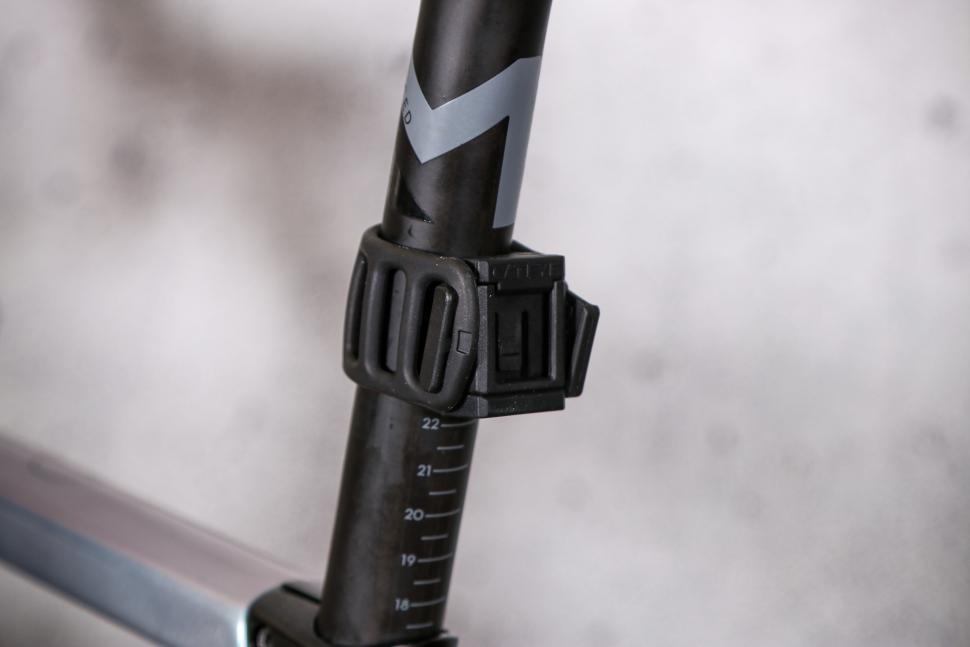


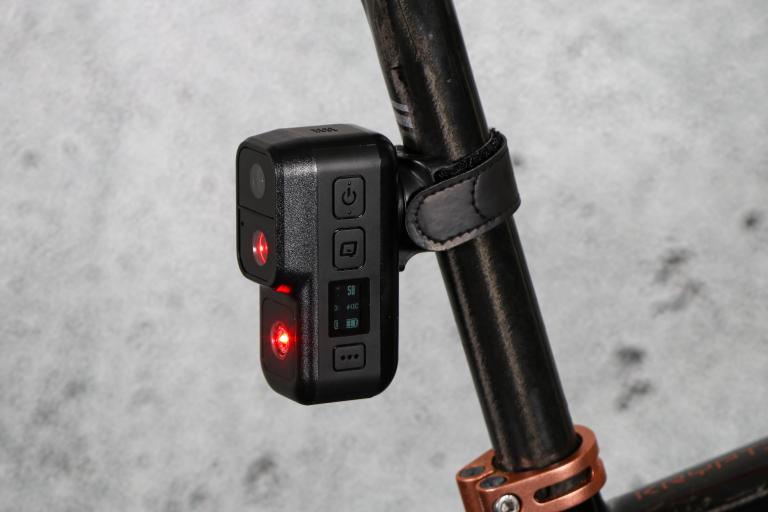
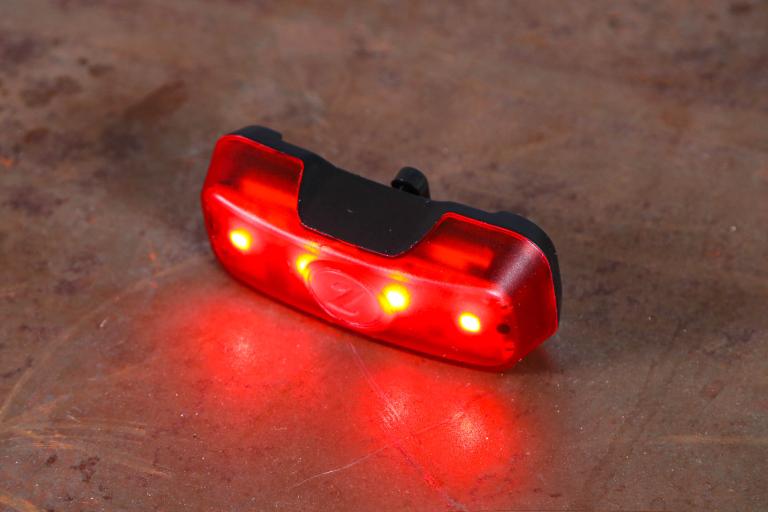
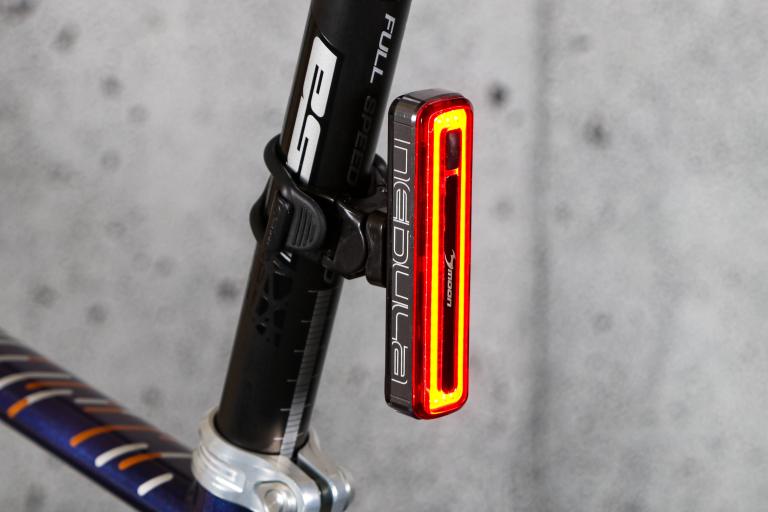
Add new comment
18 comments
I've just bought one of these, really happy with it, was initially a bit horrified at the mount but then realised it's the same old square mount block on the light itself and (like many people I'm sure) I've loads of cateye mounts spare, this works with them all.
So what happens when the battery gets run down and can't last long.? Is it modular and swappable.....or do you then chuck the entire thing?
Good question in the current climate. The manual says 300 charge cycles drops it to 70% battery capacity - no mention of what to do next. The implication is that is the life of the product.
I'm sure Cateye are not the only ones to have ignored COP26 (and 25...)
Ride 30% less.
Carry a small, 30% backup light?
Or buy a Rotlicht instead, where you can replace (and recycle) an exhausted battery. I'm getting the sense that you can't do that with the Cateye?
Very few brands sell lights with removeable/replaceable batteries any more. Environmental concerns aside, this transition is understandable as lithium powered units are so small and efficient and stay charged longer than NiMh (great for infrequent use) while the casing only needs a charge port and no battery door, which should mean that they are more water-resistant.
But you can use standard AAA batteries with Cateye's inexpensive Omni and LD610 rear lights, which are still available.
Returning to the review, I honestly cannot see how anyone thinks 300 lumens is appropriate for a red light aimed at following vehicles or riders, whether at night or in daylight. I find 30 lumens is more than enough to draw attention. The Viz 150, which appears to have a very similar shape, has more than enough punch and is significantly cheaper than this unit.
few brands sell lights with removeable/replaceable batteries any more
I still have a few lying around. I used to be sceptical about Li-ion batteries deteriorating after a year and the light lasting only about 10 minutes, and sceptical about rubber strap fittings which I assumed would tear to shreds after a year. However, I have been using the excellent (previous generation) Aldi front and rear lights for 4 years and they're still going strong so that I'm keeping the rather better next generation ones in reserve for longer trips when I really need to see all of the road ahead. The rubber fittings are showing no signs of tearing and I take them off the bike every time for charging.
Micro USB = boo!
Right way up third time, every time. I'm done with it.
I'm struggling to make sense of this. The pictures seem to show the mount remaining securely ladder-strapped to the seat post with the light removed. It gives all the appearance of being one of those lights where the bracket remains attached to the seat post and the light can, somehow, snap in and out. So I'm left wondering what the story is, and also how the light attaches to the mount.
Yeah, disregard that pic. It is possible to assemble the bracket and leave it on the seatpost sans light, but not to add or remove the light having done so, without taking the whole shebang off first.
So you're saying it's like the review tells it; remove the light to charge it and the mount disassembles itself and drops to the floor in pieces? What kind of crazy sh!t is that?
Surely CatEye can't be that stupid? What exactly is the MO with this light?
You have to unclip the strap to remove the light.
You need to be pretty cack handed to drop the 2 parts and lose them.
I'm testing the more powerful variant at the moment. I wouldn't quite say that - no. I found it was relatively straightforward to undo the ladder strap and take the whole thing off. Reattaching the ladder strap helps keep everything together, but it's not like it just falls apart otherwise (in my experience thus far). To be honest, I've tested plenty of lights which suffer from a similar issue, with the main light body, the rubber support block and the strap all tending to separate on removal, so it's not exactly unique to this range .... (@roubaixcube that includes the older Rapid range)
Don't see how you would lose anything.
The pieces are large and you would take the whole thing indoors to charge it, so hard to see how anything would disappear. Here's how it looks straight off the bike.
So how do you actually unclip the light from its bracket to switch its orientation landscape/portrait? Must it be dismounted from the bike first?
Correct - but how often will you do that?
And to charge it, you just charge it as the layout in my photo, no need to remove it from the fitting.
It makes it more secure but has anyone found the normal fittings a problem ?
Not sure really why they went for this config as it must make it a bit more expensive (or they thought thye could make a packet from spares !)
So Cateye decided it would be a great idea to discontinue the cheap and much loved Rapid Mini and Rapid Micro lights just so they could bring out a new product line with more eyeball searing lumens than you'll ever need that does nothing apart from blinding everyone behind you and inflating the price, Just so they could make more money off you.
At time of posting. Balfes have the Rapid Micro for £14 and the Rapid Mini for £17.50 -- If you are a fan of Cateye and want some of their lights then these will serve you very well for years to come.
-- Of course the Mini and the Micro are nowhere near the blinding output of the Viz 300. But having owned a Micro and still do. Even 25 lumens can be pretty blinding and dont ask me how I found that out. (just dont look directly at it and turn it on)
Of course you could always just take your money and shop elsewhere. Amazon has quite a lot of lezyne knock offs for £10-12 and while the lumens are questionable, They have a high number of positive reviews.
I wouldnt buy this cateye. Not when there are cheaper options even if you ignore amazon.